According provided by Nikon ED AF Nikkor 80-200mm 1: 2.8 (MKI) lens is huge thanks to the store www.fotika.com.uawhere you can find a huge number of different used photographic equipment, including similar lenses.
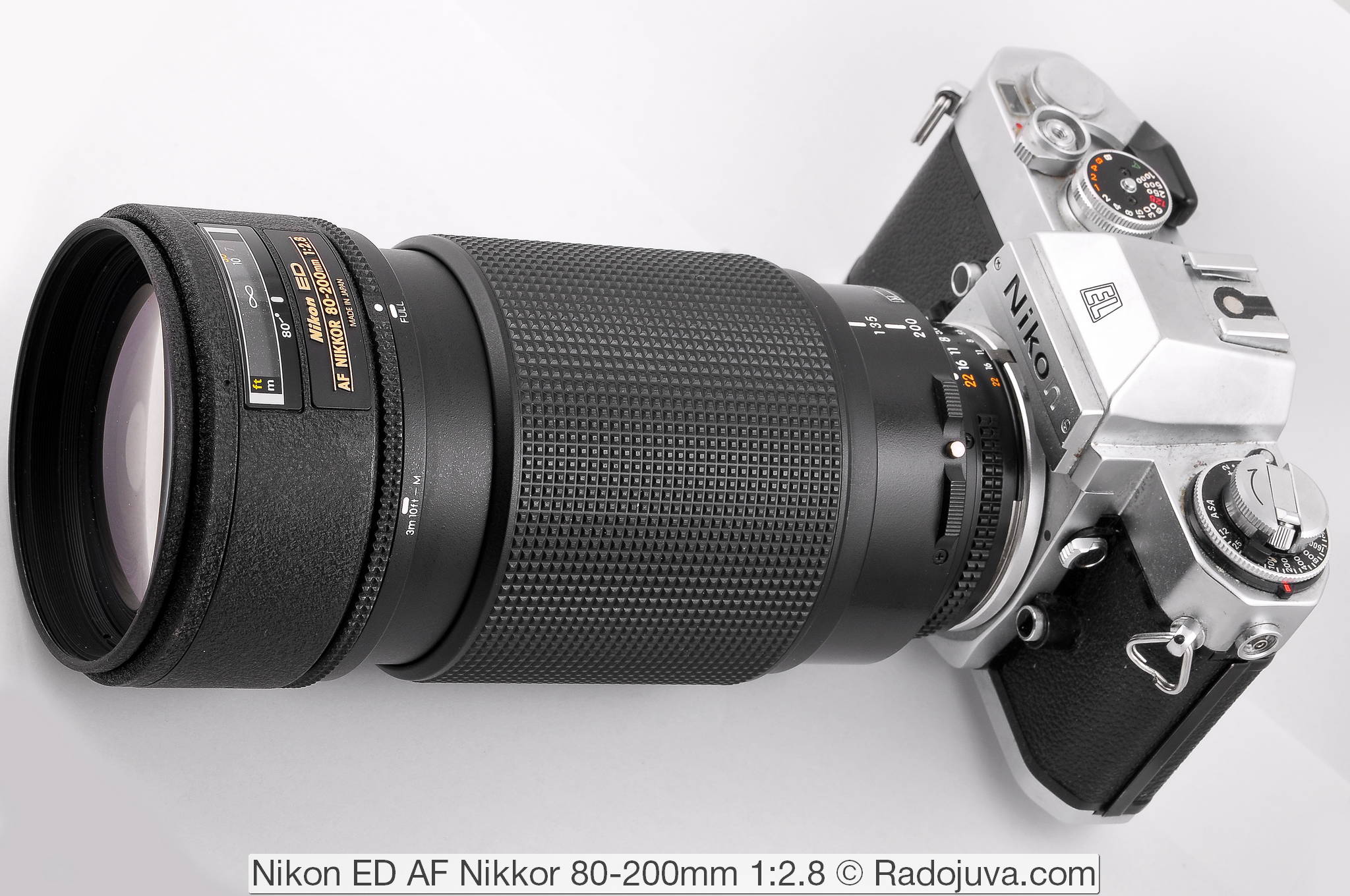
and Nikon ED AF Nikkor 80-200mm 1: 2.8 (MKI). Lens shown on a film SLR camera Nikon EL2.
Navigation
- In short
- History
- Main Specifications
- Assembly / management
- Focusing
- Image quality
- Sample Photos
- My personal experience with the lens
- Prices and alternatives
- Results
- User Comments
- Add your review or question on the lens
In the review, the Nikon ED AF Nikkor 80-200mm 1: 2.8 (MKI) lens I will abbreviate: Nikon 80-200 / 2.8 MKI.
In short
Nikon 80-200 / 2.8 MKI - the first autofocus of its kind, professional lens from Nikon. It has excellent build quality and nice design. Most often used for portraits. At the moment Nikon 80-200 / 2.8 MKI is morally outdated, at least 6 new similar models have been released to replace it. Light telephoto lenses of this class are often the workhorse of any professional photographer. It is enough to pick up a Nikon 80-200 / 2.8 MKI, take a few pictures - and you are already in love.
All dots above 'i' at once: version MKII optically a little better on the long end. Among non-motorized original lenses, I always recommend buying a version MKII or MKIII.
History
It is believed that class 80-200 / 2.8 lenses were first implemented by Nikon. Immediately after the legendary manual Nikon Nikkor * ED 80-200mm 1: 2.8 AI-s (1982-1988) the autofocus model was released, shown in this review.
A complete and accurate list of all Nikkon Nikkor class 70(80)-(180)200/2.8 autofocus professional lenses:
- Nikon ED AF Nikkor 80-200mm 1: 2.8 (MKI) - November 1987 to September 1992, 16 elements in 11 groups (with 3 ED elements)
- Nikon ED AF Nikkor 80-200mm 1: 2.8D (MKII) - from September 1992 to 1997, 16 elements in 11 groups (with 3 ED elements)
- Nikon ED AF Nikkor 80-200mm 1: 2.8D (MKIII) - January 1997 to present, 16 elements in 11 groups (with 3 ED elements)
- Nikon ED AF-S Nikkor 80-200mm 1: 2.8D Silent Wave Motor (MKIV, AF-S) - from December 1998 to 2003, 18 elements in 14 groups (with 5 ED elements). There are two colors: black and gray.
- Nikon ED AF-S VR-Nikkor 70-200mm 1: 2.8G Vibration Reduction SWM IF (MKV, VRI) from February 2003 to January 2009, 21 elements in 15 groups (with 5 ED elements). There are two colors: black and gray.
- Nikon AF-S Nikkor 70-200mm 1: 2.8GII ED N VR Nano Crystal Coat SWM IF (MKVI, VRII) - July 2009 to present, 21 elements in 16 groups (with 7 ED elements).
- Nikon AF-S Nikkor 70-200mm 1: 2.8E FL ED N VR Nano Crystal Coat (MKVII, E) - from October 2016 to the present, 22 elements in 18 groups (6 ED, 1 FL, 1 HRI element). There is a rare subversion Nikon AF-S Nikkor 70-200mm 1: 2.8E FL ED N VR Nano Crystal Coat Nikon 100th Anniversary (100th Anniversary) - April 2017 to present, features a metallic gray finish with the Nikon 100th Anniversary logo).
- Nikon Nikkor Z 70-200mm 1: 2.8 VR S (MK VIII, Z, S-series) - from January 2020 to the present day. Nikon Z mirrorless version, 21 elements in 18 groups (6 ED, 2 ASP, 1 FL, 1 SR)
- Nikon Nikkor Z 70-180mm 1: 2.8 (MK IX,Z) - from June 2023 to the present day. Version for Nikon Z mirrorless cameras, 19 elements in 14 groups (5 ED, 3 ASP, 1 SUPER ED), diagram from Tamron 70-180mm F / 2.8 Di III VXD Model A056
The MKI version is very easy to identify among the MKII and MKIII versions by the absence of the letter 'D' in the lens name and by the presence of a four-position focusing distance stop.
I want to note that the company Nikon modifies its lenses 70 (80) -200 / 2.8 more often than other companies and it has the largest genealogical list of such photographic equipment.
Main technical characteristics of Nikon ED AF Nikkor 80-200mm 1: 2.8:
| Review Instance Name | Nikon ED AF Nikkor 80-200mm 1: 2.8 363748 |
| Basic properties |
|
| Front Filter Diameter | 77 mm, metal thread for filters |
| Focal length | 80-200 mm EGF for Nikon DX cameras is 120-300 mm |
| Zoom ratio | 2.5 x |
| Designed by | for Nikon film cameras |
| Number of aperture blades | 9 straight petals |
| Tags | a window with a focusing distance in meters and feet, focal length values for 80, 105, 135, 200 mm. Infrared mark (only for 80 mm) |
| Diaphragm | from F / 2.8 over the entire range of focal lengths to F / 22. The lens has an aperture ring (NON-G - lens type) There are marks on the ring for values 2.8, 4, 5.6, 8, 11, 16, 22. The ring rotates with clicks without intermediate values. |
| MDF (minimum focusing distance) | 1.5 (1.4) m over the entire range of focal lengths, a maximum magnification ratio of 1: 5.9 is available at 200 mm (at 80 mm only 1:14) |
| The weight | 1200 g |
| Optical design | 16 elements in 11 groups. The circuit includes 3 low dispersion elements (shown in yellow on the optical diagram). The presence of such elements is indicated on the body by the abbreviation 'ED'.
The image of the optical circuit is clickable. |
| Lens hood | Nikon HN-28 JAPAN, screwed into the front filter thread |
| Transportation | With case CL-43 |
| Manufacturer country | MADE IN JAPAN |
| Period | From November 1987 to September 1992. Subsequently replaced by a model Nikon ED AF Nikkor 80-200mm 1: 2.8D (MKII) |
| Instruction (multilingual) | Download |
| Price | About 350 cu Prices for modern similar lenses can be found here. |
The main differences Nikon ED AF Nikkor 80-200mm 1: 2.8 (MKI) and Nikon ED AF Nikkor 80-200mm 1: 2.8D (MKII):
- MKI has a different body design, with a retractable front during focus
- MKI uses a non-bayonet hood (which is screwed into the threads under the filters)
- MKI has a different focus distance limiter
- MKI has a different aperture ring lock
- MKI has a different, glossy finish on the frame of the case (the part where the focal lengths are plotted)
- MKI is unable to transmit the focus distance to the subject
- MKI is an older model
- There are other small and big differences inside the lens design.
I want to highlight that the optical circuits of MKI versions, MKII и MKIII the same, and the quality of the created image is very similar. In the general case, it is generally accepted that the pattern and color of all three versions are the same, and the differences relate only to design and sharpness in the television range.
Assembly / management
Nikon 80-200 / 2.8 MKI is perfectly assembled. To the touch it is a weighty and pleasant lens.
One ring is responsible for focusing and changing the focal length. To change the focal length, you should pull or push the piston ring, to focus, rotate it. Nikon 80-200 / 2.8 MKI uses'reversible design PUSH-PULL'- the maximum value of the focal length is available when the piston ring is closest to the camera mount.
Among the design flaws, I want to highlight the fact that with prolonged use, the piston ring begins to hit hard and ring when installed in extreme positions. And the lens starts to change focal length under its own weight (heavy lenses independently move the piston when tilted).
Also, threaded rather than a bayonet hood, the absence of a tripod foot and the lack of all-weather protection (and this is a TOP professional lens) can be considered minor flaws. Nevertheless, the Japanese assembly Nikon 80-200 / 2.8 MKI will allow it to work for many decades.
The piston ring (it is also a paired zoom and focus ring) is huge, it is easy to control.
When changing the focal length and during focusing the back lens remains motionless, which completely deprives the lens of the so-called 'vacuum cleaner effect', which can significantly increase the amount of dust that accumulates in the mirror shaft.
The lens has a manual aperture ring. To be able to control the value aperture from camera or for automatic installation aperture on modern central control valves, you need to turn the control ring to the value F / 22, after which it is fixed by a special switch, which is located to the right of the marks aperture. The value of F / 22 and the latch mark are specially highlighted in red to align them. If this is not done, then on a number of cameras, the display will display an error - 'fEE' (ring is not installed aperture) Some cameras having diaphragm rheostatallow you to control the aperture using the ring aperturebut only in metering modes exposure 'M' and 'A'. You can read more about this issue in the section on Non-G Lenses. Ring aperture rotates with clicks, the values F / 2.8, 4, 5.6, 8, 11, 16, 22 are plotted on it. Intermediate values can only be set via the camera menu.
Unfortunately, the aperture blades are not rounded, although there are already 9 blades, they still form a hole with pronounced edges. From F / 2.8 to F / 8, the diaphragm forms a hole with notches (circular saws from bright light sources may appear in the photo).
Focusing
Nikon 80-200 / 2.8 MKI focuses slow... If you set the focus limiter to the 'Full' position (full range of distances), then the travel time of the lenses from infinity to MDF and back is about 3 seconds. Focusing and refocusing times are significantly reduced when the focusing distance limiter is adjusted correctly. The focusing time from infinity to MDF and back is approximately equal to the focusing time at the lens Nikon ED AF Nikkor 80-200mm 1: 2.8D (MKII).
- Focusing speed slightly depends on the camera used, details are described by me here
- Focus speed slightly depends on the selected focal length
To reduce the focusing time, the lens is equipped with a focusing distance limiter. The limiter has four positions:
- 3m 10ft - M (convenient for close-focus photography)
- FULL (uses the entire range of distances from ∞ to MDF)
- ∞ - 3m 10ft (convenient for shooting distant subjects)
- ∞ - 5m 15ft (convenient for shooting distant subjects)
The limiter is made in the form of a ring, in order to move it from its place, you must first pull the ring towards the front lens, and therefore rotate to the desired position and release. The ring rotates with a click. The stop ring will not rotate if the lens is focused at a distance outside the range of the stop position. The implementation of the limiter is inconvenient - during autofocus, it can be difficult to set a new limiter value due to the fact that for this it will be necessary to switch to manual focus mode and set the desired focusing distance. In general, the logic of the limiter becomes clear in 2-3 minutes after starting work with the lens.
Near the aperture ring is the focus mode switch A — M. The switch is made using a ring with a latch. To change the position of the switch, press the latch button and turn the ring in the desired direction. In fact, this ring is part of the lens body (the part on which the focal length marks are placed).
When used on a camera Nikon D90 (with unpretentious Multi-CAM 1000 focusing system) the lens rarely makes focus errors. I had no particular problems with the focus on focus. On camera Nikon D90 I checked the presence of the back and focus front at different focusing distances and different values of the focal length (infinity and MDF as well). Pictures taken using the Live View mode (which does not suffer from back / front focus) were used as a measure. In the range of 135-200 was observed slight front focus. Also, sometimes the lens wrong during focusing at close focusing distances... It is generally accepted that focusing errors at close focusing distances are the main drawback of the MK1 version.
It's important: auto focus with this lens is available only when using him on cameras with built-in motor focusing.
Exact list Nikon DSLR cameras with a built-in focus motor, on which this lens will focus automatically:
- D1, D1h, D1x, D2x, D2xs, D2h, D2hs
- D3, D3x, D3s, D4, D4s, D5, D6
- Df
- D50, D70, D70s, D80, D90
- D7000, D7100, D7200,D7500
- D100, D200, D300, D300s,D500
- D600, D610, D750, D780
- D700, D800,D800E, D810, D810a, D850
- Fujifilm FinePix S1 Pro, S2 Pro, S3 ProS3 Pro UVIR, S5 ProIS Pro
- Kodak DCS PRO 14n, DCS Pro SLR/n
Exact list Nikon DSLR cameras without a built-in focus motor, on which this lens will not focus automatically:
Only auto focus and sound confirmation of focus will not work with these cameras, all other important functions, such as automatic exposure metering and automatic iris control, will work well.
You will find a lot of useful information on the types of cameras and lenses Nikon here.
During focusing, the front of the body frame (the so-called trunk) goes forward and rotates. The use of specialized filters is difficult. When changing the focal length, the front and rear lenses remain stationary (the lens uses internal zoom).
The focus ring rotates approximately 135 degrees. The focus ring is not rubberized, combined with the piston ring. The stroke of the ring is smooth. During auto focus, the focus ring rotates freely and does not affect focus. It was convenient for me to work with manual focusing on this lens.
The minimum focusing distance is 150 см over the entire range of focal lengths (distance from the camera sensor to the subject). Sometimes there is information that the MDF is 140 cm. Unfortunately, on the focusing distance scale, the minimum value is indicated only for 1.8 m, after which an orange stripe with the letter 'M' begins. This letter stands for macro mode. The maximum zoom ratio for macro mode is 1: 5.9 and is achieved at 200mm focal length. it good indicator for a similar telephoto lens. For example, version Nikon AF-S 70-200 / 2.8GII N VR can shoot with a maximum ratio of 1: 8.3 (significantly worse than Nikon 80-200 / 2.8 MKI).
Focus Features:
- Nikon 80-200 / 2.8 MKI uses an exclusive system Nikon CRC (Close Range Correction - image correction at small focusing distances), which allows you to maintain good image quality at any focusing distance. Nikon CRC It works on the principle of floating elements - during focusing, individual optical elements move independently relative to each other.
- During focusing, the lens and camera are quite noisy.
- When the extreme focusing positions are reached, the strokes of the focusing mechanism are heard (massive lenses knock against the extreme positions). Do not worry, this is a common occurrence for massive screwdriver lenses.
- There is the effect of 'Focus Breathing' (changes in viewing angle during focusing).
- Nikon 80-200 / 2.8 MKI has no focusing issues in Live View (tested on Nikon D90).
- When changing the focal length, focusing is lost.
- Nikon 80-200 / 2.8 MKI does not transmit the focus distance to the subject in the camera and is a type lens Nikon NON-D.
- The lens does not have a hard stop (hard infinity mechanical stop) which allows you to accurately and quickly focus the lens to infinity under any external temperature conditions.
- Nikon 80-200 / 2.8 MKI has window with a scale of focusing distances in meters and feet, as well as a scale mark for working in the infrared spectrum, however, only for 80 mm focal length. No depth of field scale.
- One of the implicit advantages of telephoto lenses with a maximum aperture of 1: 2.8 is that they can be used with teleconverters without any problems. Thus, the Nikon 80-200 / 2.8 MKI is compatible with a large number of original Nikon teleconverters. When using a teleconverter with 2 X, the lens turns into '160-400 / 5.6', which allows automatic focusing on all Nikon digital SLR cameras. But when using teleconverters with darker televisions, automatic focusing on many cameras with a simple focusing system can cause serious difficulties.
Image quality
Due to the fact that this lens is long and hopelessly outdated, it most often acts as a creative lens for portraiture. He is very good for these tasks. For portraiture, it would be generally ideal if it had a more rounded aperture.
The main advantages of the created image:
- good contrast over the entire range of focal lengths
- good sharpness at open apertures in the range of 80-135 mm, sharpness drops noticeably in the tele-range of 135-200 mm
- good color rendering
- pleasant, 'artistic' hips
- moderate chromatic aberration and distortion
- you can get a pronounced effect of the rays of the star
The main disadvantages of the image:
- weak macro mode
- uneven circles in the blur zone due to straight petals aperture.
- noticeable subsidence of sharpness at F / 2.8 in the corners and edges of the image over the entire range
- tangible amount of artifacts while working in backlight
- strong vignetting at 200 mm and F / 2.8
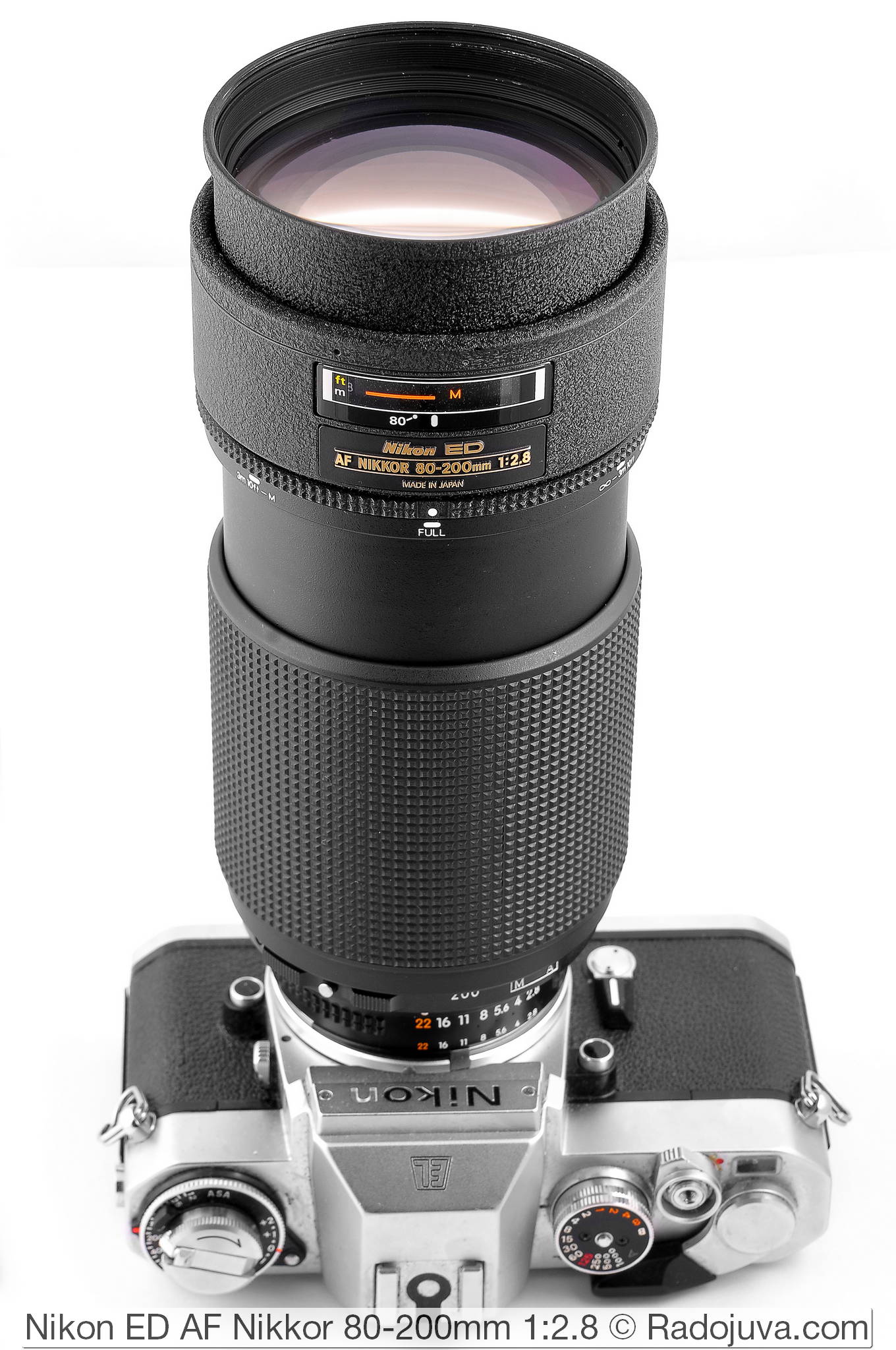
Nikon ED AF Nikkor 80-200mm 1: 2.8 (MKI). Lens shown on a film SLR camera Nikon EL2.
Sample Photos
Pictures from Nikon D90. The photos in the gallery below are shown without processing, the conversion of the source RAW files by the original Nikon ViewNX-i utility without making additional adjustments.
Download source photos in RAW format (.NEF) can be at this link.
My experience
I used to use the version for a long time Nikon 80-200 / 2.8D MKII, real functional differences between MKI and MKII immediately and you will not find. True, due to more stable focusing and virtually internal focusing, Nikon 80-200 / 2.8D MKII I would try to focus on the version MKII. Prices for MKI and MKII sometimes practically do not differ.
The picture from this optical circuit is very nice. For artistic purposes Nikon 80-200 / 2.8 MKI, MKII и MKIII fit better than the 'boring' stabilized versions.
I highly recommend having any such lens in my arsenal of almost any photographer. Personally, I love lenses with a similar focal length more than anyone else.
Prices and alternatives
This lens can only be found in the used version. Despite their age, Nikon 80-200 / 2.8 MKIs sell for $ 300-400, depending on the condition of a particular instance. Prices for new similar lenses for Nikon cameras can be found here.
Due to the not very high cost, there are few alternatives for this lens. I would highlight the following options:
- Nikon ED AF Nikkor 80-200mm 1: 2.8D (MKII)
- Tamron SP AF LD 70-210mm 1: 2.8 67D
- Sigma AF Zoom APO 70-210mm 1: 2.8
- Sigma 70-200mm 1: 2.8 APO EX HSM (and its modifications: DG, Macro DG, Macro DG II)
- Tokina AT-X AF SD 80-200mm 1: 2.8
- Tokina AT-X PRO 80-200mm 1: 2.8
Comments on this post do not require registration. Anyone can leave a comment. Many different photographic equipment can be found on AliExpress.
Results
The Nikon ED AF Nikkor 80-200mm 1: 2.8 (MKI) is a remarkable lens from a bygone era. Compared to new model Nikon 70-200 / 2.8E FL ED N VR This old man looks too archaic, but we must not forget that everyone who loves the autofocus light telephones of the 80 (70) -200 / 2.8 class began exactly with this Nikon ED AF Nikkor 80-200mm 1: 2.8 (MKI). I recommend it as a good, proven portrait lens for little money (but it's better to find a version MKII).
Material prepared Arkady Shapoval. Training/Consultations | Youtube | Facebook | Instagram | Twitter | Telegram

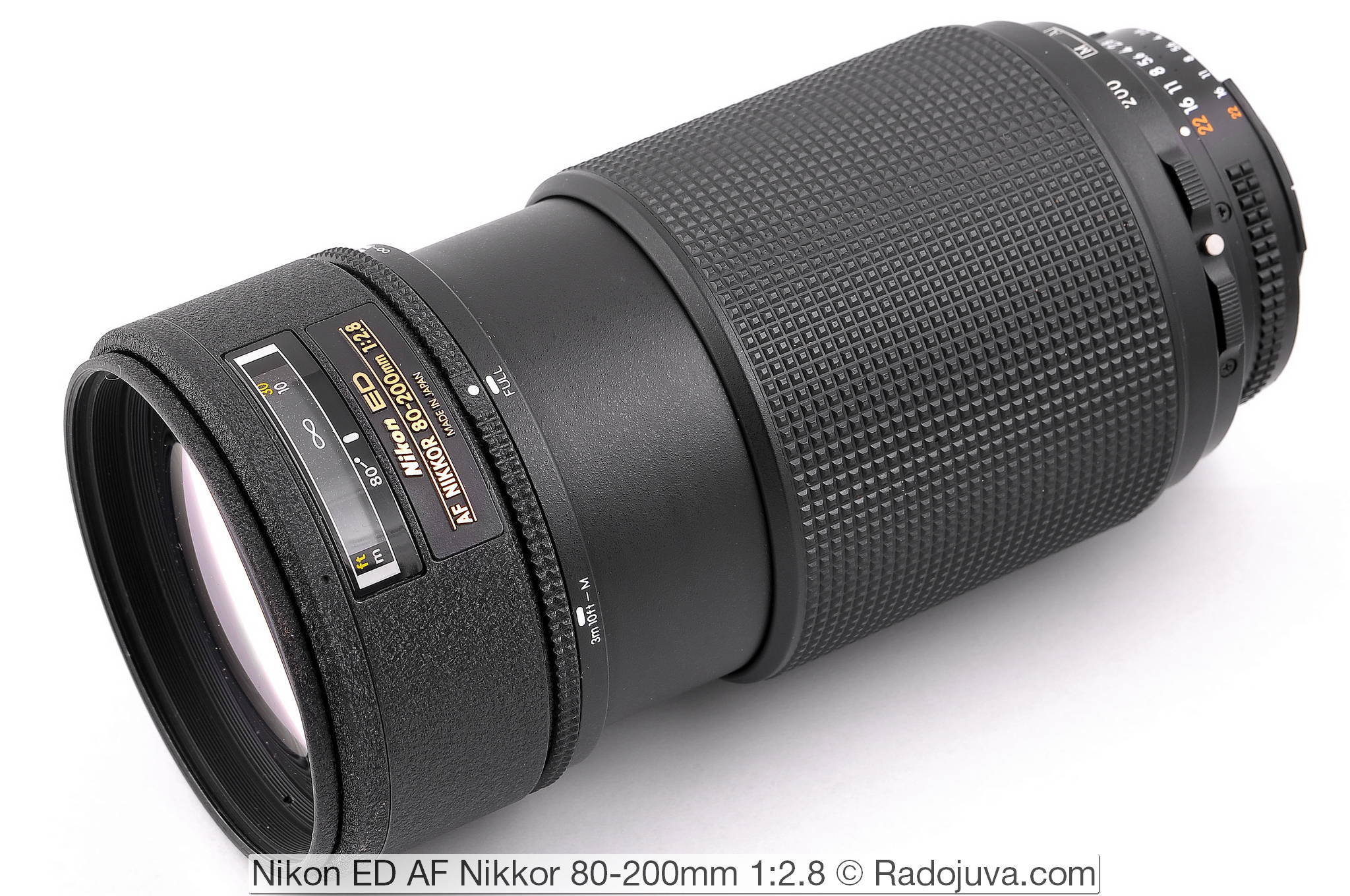
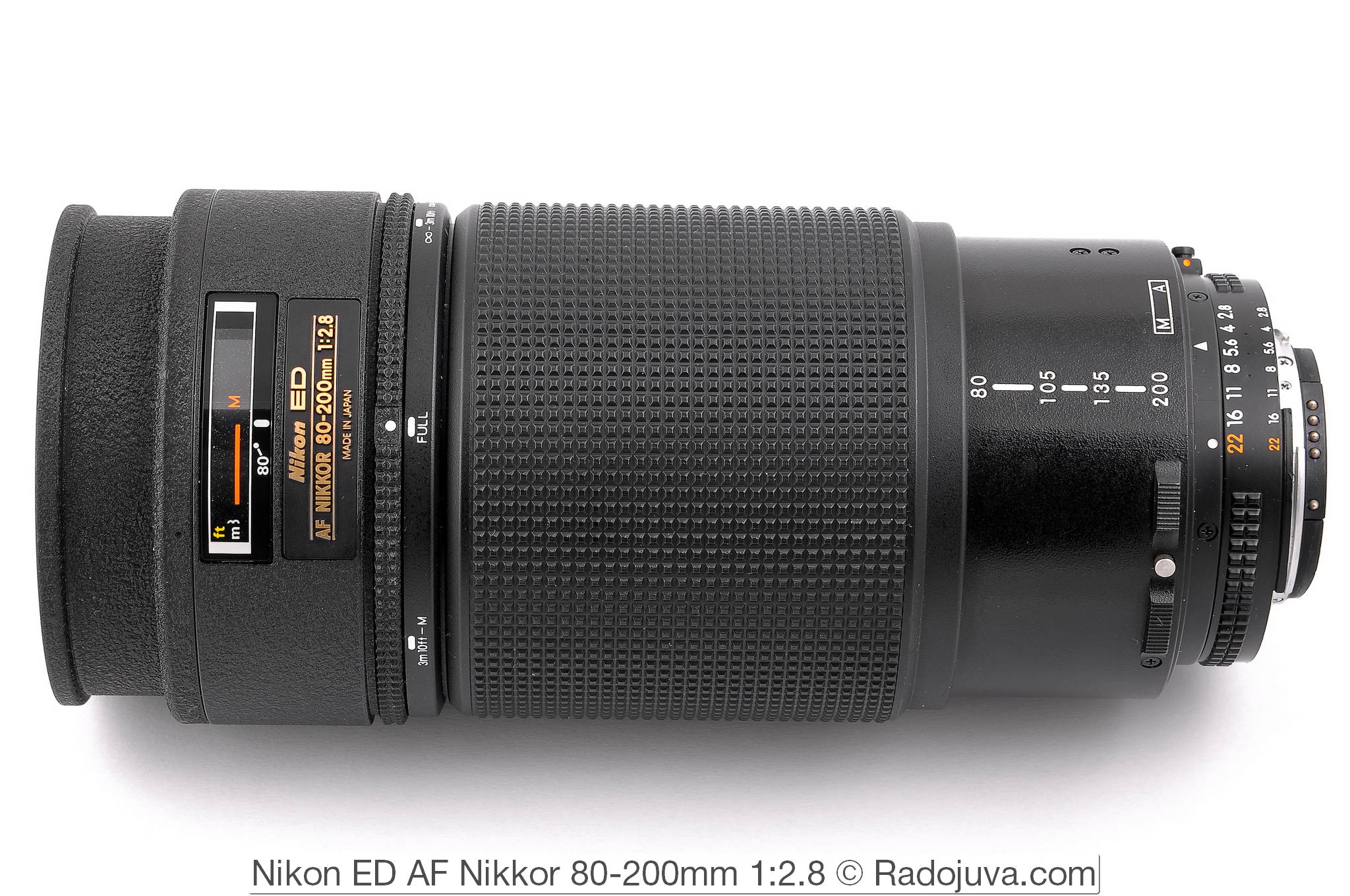
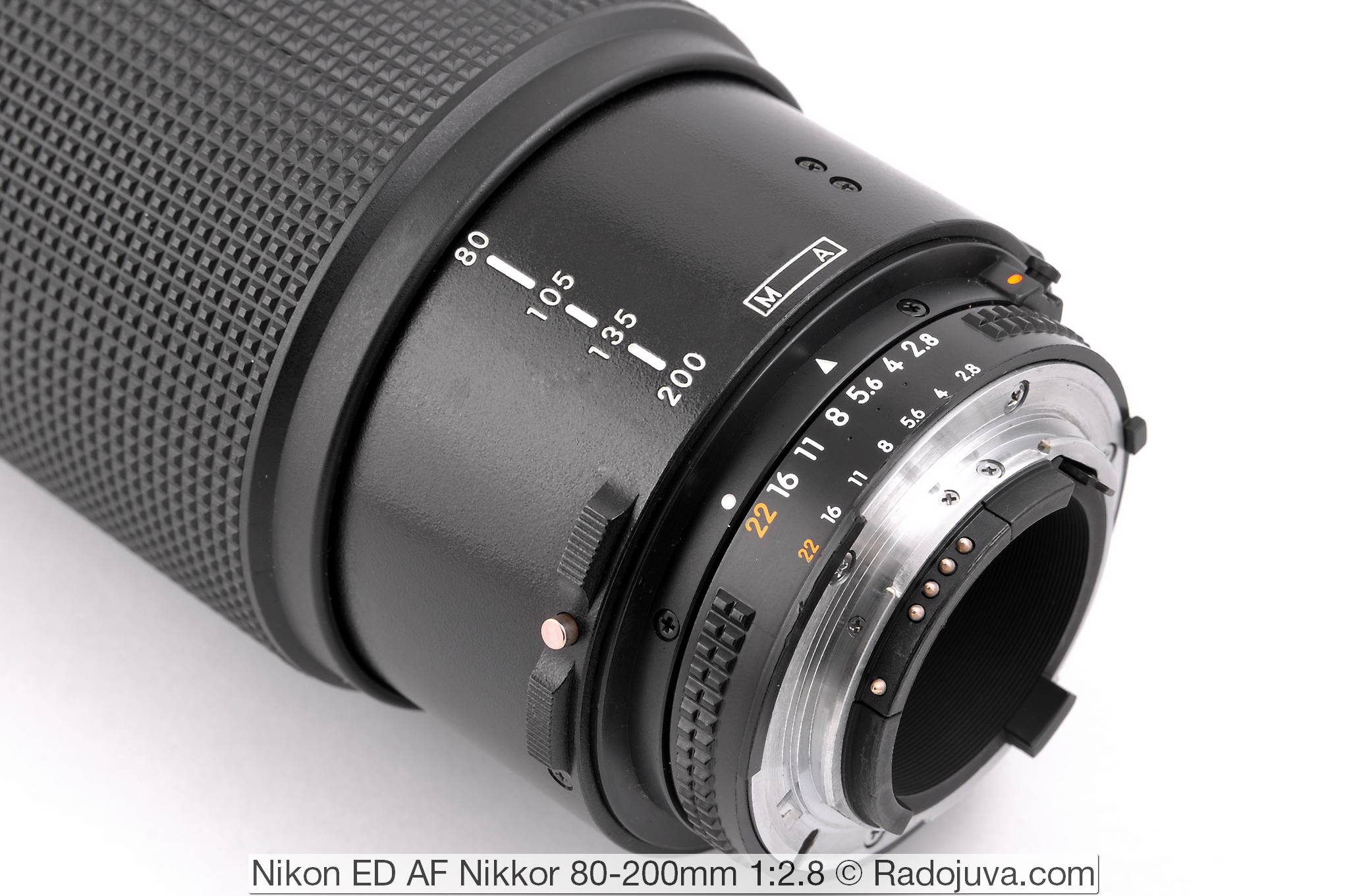
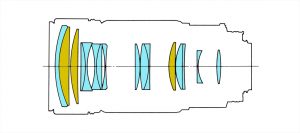
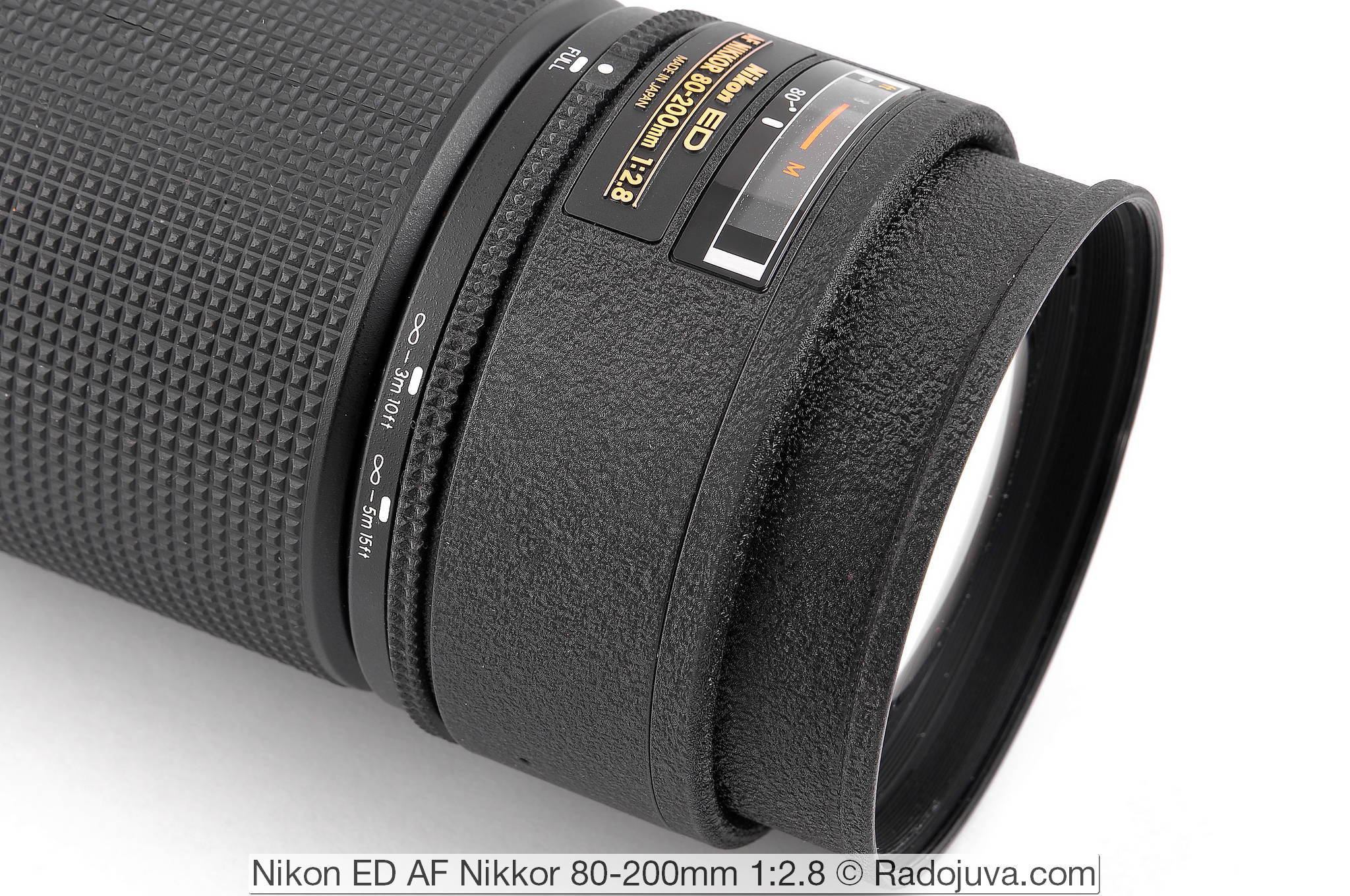
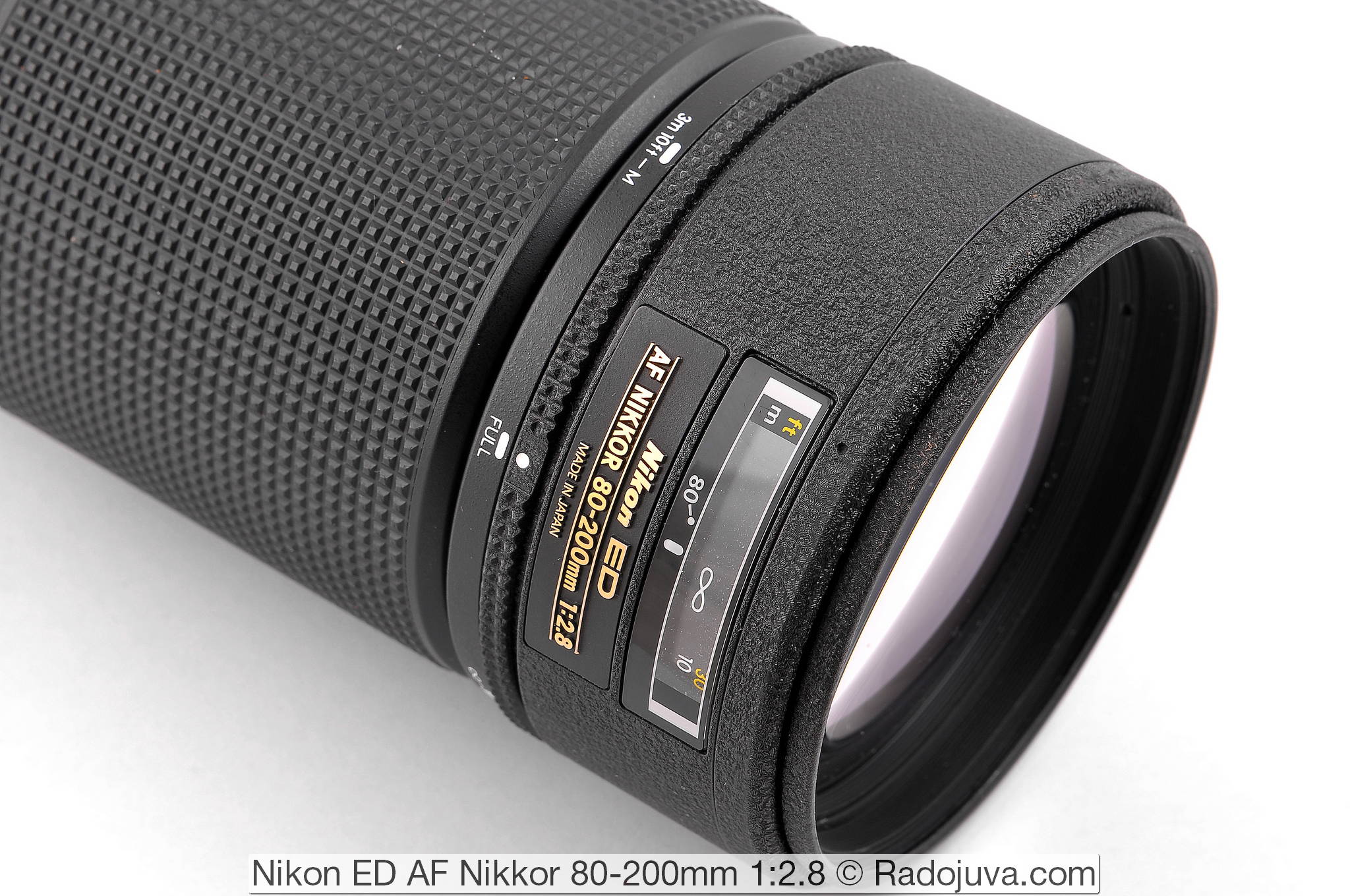





















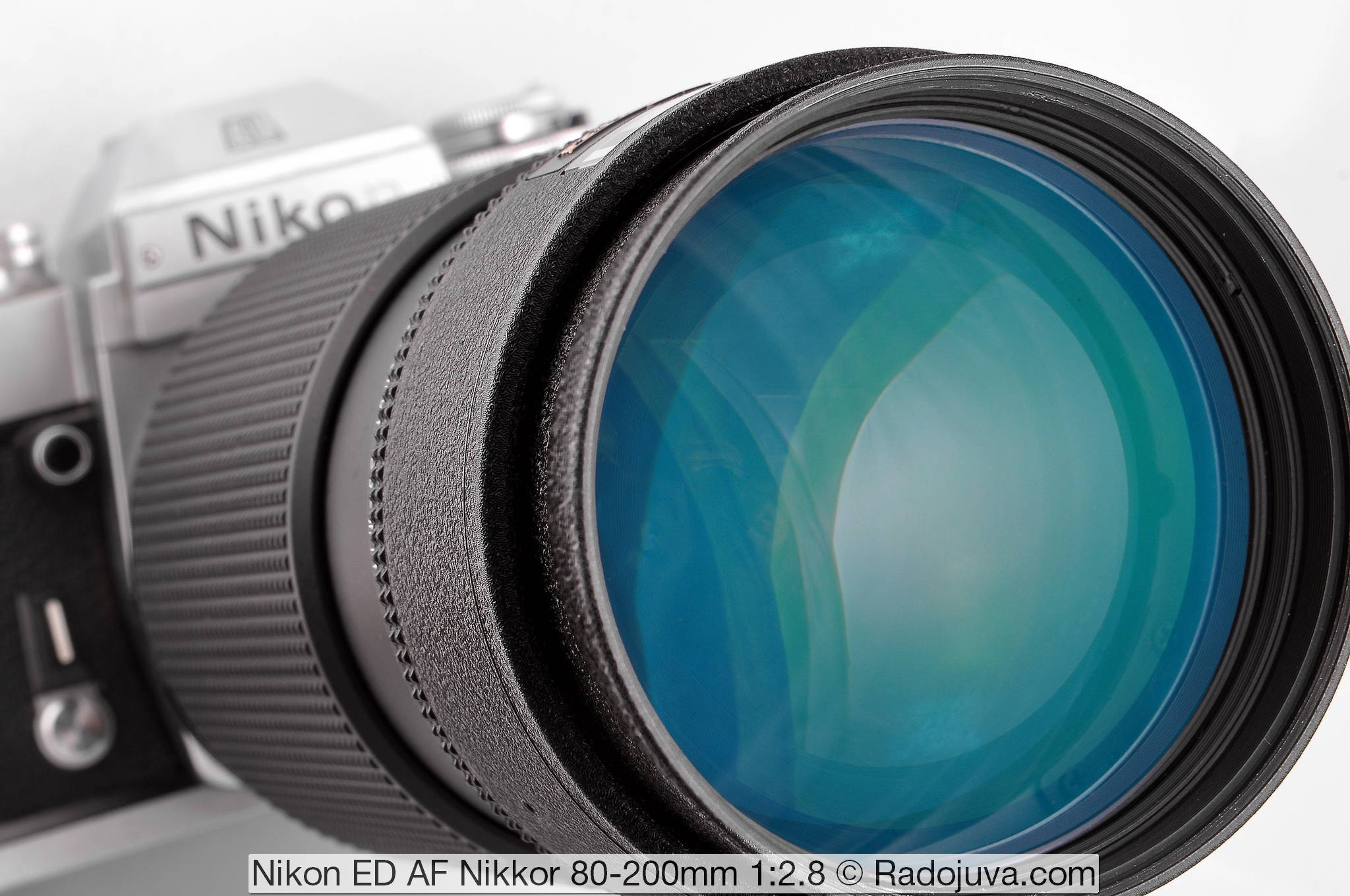
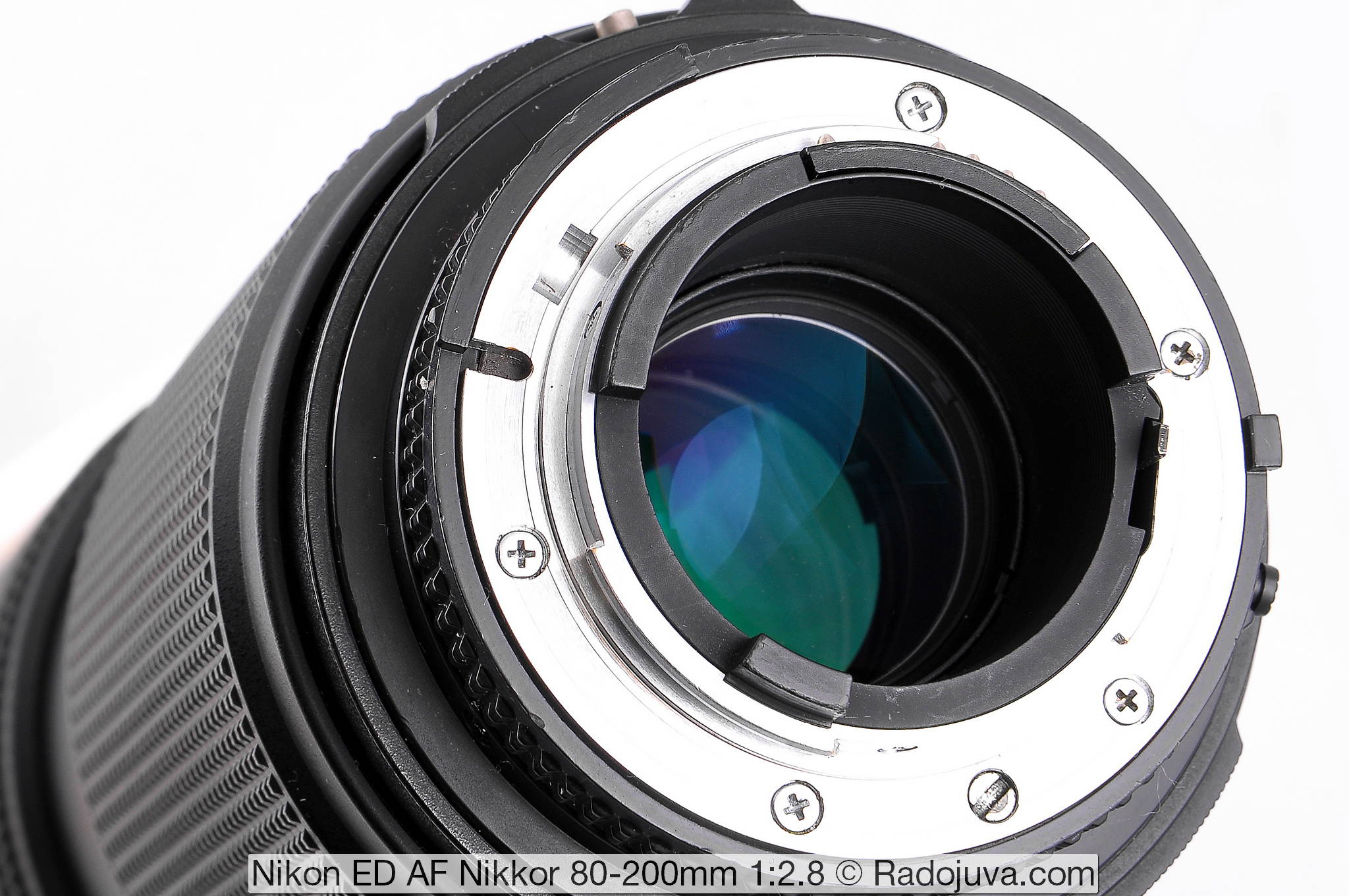
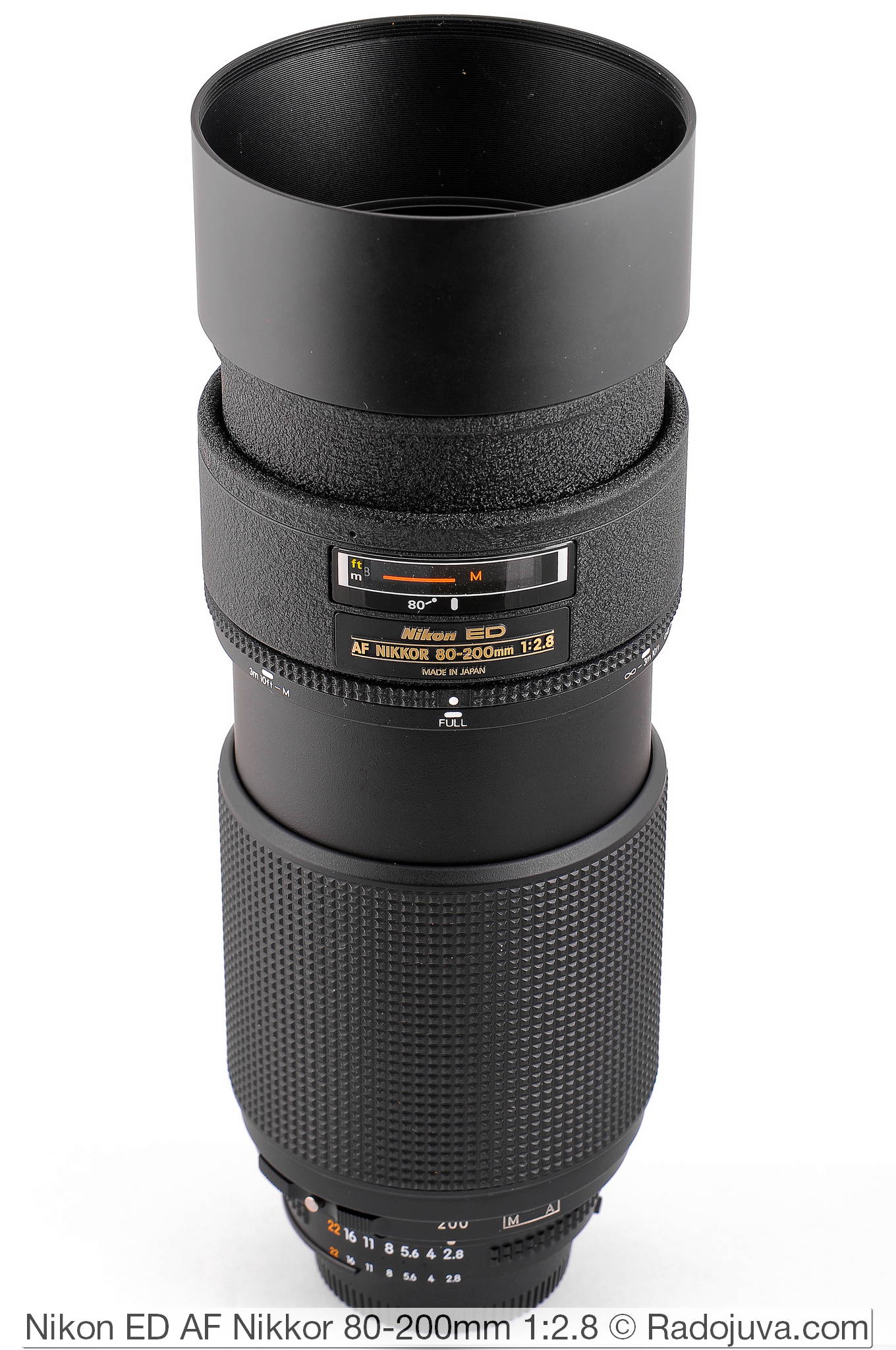

The lens is awesome, of course, you can't argue with that. But here's the question - have I been at the crossroads for a long time to take 180 2.8 units or this comrade. Arkady in your opinion, is there a difference in the quality of the image of a hundred and eighty and this old man?
180 by 2.8 and this one by 180-200 by 2.8 in sharpness is significantly different. 180 is more enjoyable, and 80-200 is more convenient due to the zoom.
Thanks. Still have to take a 180-ku,
I have 80-200 MK2 and 180 2.8 MK4, if I would now want to sell one of them, I would sell the 180 without hesitation
But why?!
A good instance of 80-200 I came across, probably. In the 180s, sharpening is higher, but this is noticeably visible at the edges of the frame, which is not always important, in the 180s, non-weak HAs are obtained sometimes, which is very annoying. The 80-200 like the picture more and its versatility.
Here are those times. Are there chromates on the ED glass ?! Have you ever used the non-telefocus version of 180 2.8 uh ai-s? He is better? Worse?
take a look at the 180 MK4 review, I recently uploaded a photo from the XA of this lens. I had a non-autofocus 180 2.8 ai-s (without AU), but it was very "ushat" by life and I did not use it for long, so I can't say anything, I read reviews that the non-autofocus version 180 2.8 AU ai-s is better for HA, than subsequent autofocus. Read what Arkady writes in the reviews - he tested them all
Informative.
Thanks to your blog, I learned a lot.
Thank you.
A juicy lens, a real workhorse.
sharpness is not enough? or lubricants? especially where the girl in the white hat. shutter speed 1/400
At 200 mm, sharpness is not so hot.
on d700 will be much more interesting)
Take 70-300VR and do not take part - on the D700 and on the crop it will be better. The price is the same, but there is a minimum of lubrication.
Less juicy picture than 80-200, but the stub is super, sharpness and contrast are good. 70-300 will be easier than this drin. It will say that the garbage is only the one who did not work for it.
"Better than mountains can only be mountains ..."
I filmed weddings at 70-300BR (I had half a year for personal use), and then at 80-200 microns for half a year. The picture is heaven and earth, 2 / 300 strongly merges the picture at 5.6 / 200. I took off for another half a year of the wedding at 2.8 180, the convenience of 2.8-80 outweighed the disadvantages of the 200.
was like 70-300 - soap and rotten - glass for beginners or those who have not tried 80-200 / 70-200
no budget zooms will come after them
today I was shooting at 18-200 - the light is good - the camera is 10MP - I pressed the hole, but in the end only a sharp center and closer to the edges of the soap.
comparing with 17-55 2.8 - nothing at all - just convenience and that's it.
on the topic - I myself once had 80-200 μ2 - gorgeous glass - sold for only one reason - extreme inconvenience for zooming / focusing with the same ring.
replaced by 80-200 mk3.
And as for me 70-300vr (as I understand it about the vr version of the speech) - a very decent glass for its price. Sharpness up to 270m is good with an open one, at 300mm press it to 8 and everything is fine too. As for the rotten stuff, maybe there were expectations to use it as a portrait glass, or it's purely in comparison with the more expensive light zooms. Although 70-300vr can be used for portraits, if nothing else is at hand. The blur may not be as beautiful and strong, but overall the bokeh is not bad. Besides, 70-300vr is lighter than zooms with 2.8 and is less noticeable in a crowd, especially without a hood. Well, the 70-300vr has some kind of weather protection, which a number of much more expensive light zooms do not have.
Under the portrait, 70-300 is at times worse than 80-200.
"70-300vr and for portraits can be used if nothing else is at hand"
I mean, if you choose from nothing, then you can shoot a portrait at 70-300vr. It is clear that at 80-200 2.8 it will be better, but at 85 1.2l it will be even better. And on Zeis 135 1.8, you’ll probably get hurt in general, though I didn’t have it, purely suspicion :)
In addition, Alexei 917 did not say about the portrait component, but about glass in general, which I allowed myself to disagree with. For me, glass is very successful and at its price it copes with most tasks of the television range.
Arkady, you are writing nonsense. The implementation of the limiter is convenient - during autofocus, setting a new limiter value may NOT need to switch to manual focusing mode. Your synthetic test for measuring the focusing speed does not coincide with reality, the speed depends on the AF tenacity, what is the use of the speed of 50 / 1,8G if it crawls and cannot catch on to the object, and the slow 50 / 1,4G and 80-200 / 2,8 , 1 (Mk80) - tanks focus unhurriedly and without misses. I used 200-2,8 / 1 (MkXNUMX) to shoot a Negro in a black T-shirt at a concert with poor lighting - no problems with speed or focusing accuracy.
Really? 'speed depends on AF tenacity'?
I write that it is may be difficult. As counterexample - when the lens is focused on infinity, then the limiter cannot be set to the position of the limiter 3m 10ft — M (you can check it yourself and write the result here in the comment). To set the limiter to the 3m 10ft — M position, you will need to either automatically (already unnecessary actions) or manually force the lens to refocus, which falls into this range and makes it possible to move the limiter ring to a predetermined position. The easiest way to do this is quickly and accurately, by switching to manual focus mode. For example, the limiter on the MK7 always switches at any time at any focusing distance, which is a really convenient solution.
I am glad that you can shoot in difficult conditions with difficult lighting, no one says that the lens has frequent mistakes or poor tenacity (do not believe it, then re-read the review). But to be truly objective, this lens focuses slowly. It is very easy to check on moving objects towards the photographer. With the same children with test photos, things are not so simple. If you dig deeper, it is this lens that has become a problem for Nikon. In the beginning, it was positioned as a professional lens for shooting sporting events and reporting, but in the end its speed was not enough, especially in comparison with the slightly newer Kenon 80 200. Very seriously, the lens’s slowness is felt during a miss, spend 2 and a half seconds on refocusing (when the limiter is in FULL mode) it is an unacceptable luxury not only in sports competitions, but also in other types of shooting.
Seriously, it’s from the tenacity of the AF, and not from the run with the lid closed from infinity to MDF and vice versa. What lens counterproperty in real shooting conditions is better than AF 50 / 1,8G or 50 / 1,4G? In order to change the focusing distance to the necessary, it is enough to cover the lens and make a half-press on the shutter button, this will be an order of magnitude faster.
I understand that I want to be right, but the speed and tenacity of the concept are different. And the speed is not directly dependent on tenacity. A counterexample is simple: with the release of a more advanced camera with a more advanced focusing module, tenacity is seriously increased. If one lens on an old Nikon D70 misses 5 times out of 10, then on a new camera, for example, Nikon D5 misses will be 1 out of 10. Moreover, the reaction speed (focusing speed, focusing speed) will be the same on both cameras and will depend from the lens motor (in the case of the indicated G lenses) and its logic of operation. If MK1 on Nikon D1 for a long time rattled with lenses for focusing, then on d5 it will rattle for a long time with lenses.
As for your counterexample with 50 / 1,8G and 50 / 1,4G it is not clear what exactly is the counterexample?
As for the limiter, it is time to recognize that this is an old mechanical switch, archaic, requiring extra time and attention
1. cover with what? The left hand is inconvenient, the weight of the lens is large, it is inconvenient to hold the camera with the lens with one right. You can still tilt down, but this is also unnecessary action.
2. doing once again focus activation to change the distance in vain seems to me an archaic ancient grandfather method
It’s especially easy to want when it’s right. I compare the lenses naturally on the same camera, be it D90, D7000, D750, D800, so here your passage is out of place at all, even the carcass is the same. I can’t say anything about D1 and D5; I didn’t shoot any of these cameras. But for example, focusing on the D90 and D800 will have a different focusing speed, the motor in the D800 is more powerful, this is important for screwdriver lenses.
About fifty dollars, everything is simple. With the lid closed, 1,8G is known to be faster than 1,4G. But in real shooting conditions, 1,8G starts to crawl even on simple scenes, and 1,4G does not experience problems, it slowly focuses and does not smear. And then what is your autofocus? This is the ability to drive from MDF to infinity and vice versa, how do you test or focus on the subject? I normally hold 80-200 / 2,8 on the camera with one hand and feel uncomfortable, if someone else is uncomfortable, then this is not fate. And I learned from you about the archaic ancient grandfather method.
Please do not confuse the concepts of autofocus and focus speed. I understand that you can get used to any lens and be able to handle it. But this does not in any way alter the fact that the lens has an old limiter mechanism and slow focusing. I have not seen anywhere else evidence to the contrary.
As a bonus, I’ll tell you that, according to the masters, the limiter in this lens in the middle of the lens is very difficult. A frequent failure is the rollers falling out of this mechanism. The overall structural integrity of the lens is reduced. I don’t think that Nikon was surrounded by stupid people who, in addition to adding support for focusing distance transmission, in the MK2 version completely changed this limiter mechanism.
Yes, of course, AFs are not connected with focusing speed, AFs are part of the diaphragm))) Isn't AF created for focusing?
Arkady, if there are no arguments, then there is no need to show, then you do not have to rest and not accept objective arguments, as well as show nobility and tell bonuses. I understand that it’s unpleasant to sign incompetence on your site, cut out comments, then business. My lens is almost 30 years old and has seen a lot, the limiter is alive, the focuser does not slide down under its own weight
I didn’t write that I’m not connected, I just don’t need to replace the concepts of focusing speed and focusing in general. We discuss your opinion that this lens focuses quickly and that the focus distance limiter is comfortable / inconvenient. I made good arguments about the slow focus, as well as the inconvenience of the limiter. You are now moving on to the general concepts of focus, tenacity, and accuracy. Unfortunately, apart from personal impressions and opinions about the MK1, I did not see a single confirmation of its quick focus or the convenience of the focus limiter. Also, in your very first comment you indicated that I am writing nonsense. I argued everything to you, but unfortunately I didn’t even hear elementary thanks from you.
As for the grouting of comments, everyone knows that on Radozhiv I am loyal to comments, if I am wrong somewhere, I will definitely correct everything (look for comments marked 'FIXED'). Only comments that violate the blog rules and are described by here (elementary insults of participants, spam, obscenities, politics, etc.).
Please do not move away from the topic of discussion, becoming personal.
Arkady, I did not write about the focusing speed, I wrote that checking the speed with the lid on does not give anything, that this synthetic one is nonsense and you, as a practicing photographer, know this very well. Focusing speed, without focusing is nothing, these are integral concepts and I wrote about the technique, it is she who is nonsense. I think you will not dispute the example with fifty dollars.
Regarding "thank you", I wrote to you in a personal in VK, I think it makes no sense to repeat.
Come on. In the review, I indicated how the lens behaves in real conditions of work on a specific camera, isn't that what I wanted? As for speed - for non-motorized Nikon lenses, running the lenses from infinity and back gives a very good understanding of the time spent on focusing, as well as the speed itself. Motor lenses are more complicated, most of them can have different lens travel speeds depending on the light (with or without a cover).
Once again, about synthetics - here in the review specifically in real conditions the focusing work is described, where is the synthetics? If my lens in the FULL position was focused on MDF (I was shooting a pigeon sitting on a bench), then waiting for a long time until the lens refocuses from MDF to the infinity region where children play is a real sign of slow focusing. At the same time, focusing tenacity here does not affect the speed in any way. During this time, all key points can be missed.
From where do I know who writes what? Anonymous Victor, after all, thousands of them.
Recently, without hesitation, I bought a Nikon 80-200 MKI. I didn’t keep up with the price ... I don’t regret it. Nikon Df got up like a native. The focal length is read and transmitted to EXIF Nikon Df. I haven't paid attention to D7000 yet ... Look here some of my photos of MKI http://dburn.ru/catalog/item1278.html
I own such a lens - and I can confirm the following:
1) run from 0 to infinity and back ~ 3 (~ 2.5-3) seconds (D800)
the focusing speed is sufficient in most cases - but it will not be suitable for a sports report because the refocusing time is long. - AF point setting can often help - then it will be better, because when all the points are activated - AF may not immediately understand what you want to focus on, and refocusing time may not be enough
2) "And the lens also begins to change the focal length under its own weight (heavy lenses move the piston on their own when tilted)." - when tilting down - I do not observe, but when tilting up - there is a change in focal length
about the distance limiter - in my copy it turns with great difficulty, and it is difficult to use
There is no mold on my copy - as far as I know, during the production period of this lens, Nikon switched to a different glue - which does not cause mold and lenses with later serial numbers should be free of this drawback, although much depends on storage
but otherwise it’s a great lens, an order of magnitude better than the 70-300 that I had.
For portraits, he, ichmo, is more interesting than 24 (28,35) -70.
I have both 70-300VR and 80-200 MKIII in the set - these glasses should have different applications.
My 70-300 is very sharp and accurate from 7.1 to 16, the ideal low-cost reporter on a 7100 crop. Reportage fees - very hard technical rough drawing with cheap dull color reproduction
After the transition to the D800 (formally there is sharpness but no beauty) I generally ceased to like it (it’s convenient for the birds and sometimes it won’t weigh down on the trip). And on the contrary, 80-200 revealed a 100% -absolutely real picture as in life.
I do not understand people who drag from portrait use 70-300
If you are talking about my comment, I’m not dragging myself from the 70-300vr picture, but simply saying that in extreme cases they can shoot portraits, it will be better than 16-85 or 18-55, but worse than portrait lenses. I trudge from 85 1.2l and 135 2l, but I use 70-200 2.8lis2, selling the two previous ones, because it seemed no worse, but more convenient (although 1.2 by 85mm was very interesting to use). Yes there, portraits are gorgeous. Another Zeiss 135 2.8 pleases 85 1.8 of both systems. But in the case when there is no other lens nearby, you can shoot a portrait at 70-300vr. And for my taste it comes out better than with the crop 55-200vr and 55-300vr. But in general, it is more suitable for reporting (although autofocus is not superfast) due to the spread of focal lengths, light weight and protection.
By and large, a portrait (as such) can be shot at 18-55 or a fisheye. It all depends on your idea in the end. If we talk about the "classic" portrait frames (from 85 to 180 mm) and the classic portrait, then it can be removed at any zoom from 55 (80) mm-300 (200) mm with approximately (!!!) the same the result is average. Fixes of the type 85 1,4 from Nikon, or 85 1,2 from Canon in the portrait will draw you an oil painting, with a zoom everything will be much easier ... I myself use now for a portrait 80-200 2,8 (2) Nikkor, 85 1,4 Samyang, 90 2,5 Vivitar (1Series). There is something to compare. Previously were (at different times) in use 70-210 4,5-5,6 Nikkor, 70-210 4 Nikkor, 55-200 4,5-5,6 Nikkor: all decent glasses and a portrait can be take off, but! It depends on what you want from the same portrait. I lacked artistry. 70-300 -excellent glass and its stub is cool ... for sports (on ff cameras), for photography (animals / birds) -That itself! It will be boring for portraits (like all telephoto zooms).
Arkadiy, dyakoy for your robot.
Longer than a great resource, you may know a long time ago for a bagato of cinnamon and tsikavoy.
The people, I think it’s time for me to take these gimmicks and switch to mirrorless ones like the last Lumixes and Olikov. There are a lot of interesting lenses, there is a stub on the matrix and on the glass. Prices there are simpler.
Hand over.
and how much will the analogue of such a gimmick like this MK1 cost?
TA-dah! And better, just shoot everything with an iPhone.
About the gimmicks and prices easier, look at a cozy stream with Mike Toptygin. A pretty interesting conversation turned out.
But…
Working ISO up to 1000 TC matrix is 4 times less
Only new optics - almost no buys (not basic models)
With any stub, it is normal not to photograph more than 1/30 of people - so working ISOs are more important than stubs for photos
3 times less frames than a single-charge DSLR
Video Finder Lag
.....
But for the video, few of the Nikons can compare with them (mb only d500, d850, d5), but I would put it on Panasonic
And for 70-300vr, Arkady has long had a review here.
Nikonovsky 70-300 VR loses even to Tamron 70-300 VC USD noticeably, but both of them are worse in picture beauty than the lens in the review.
There were at one time 80-200 MKI (used from the USA, after intensive prof. Use) and MKIII (ideally, practically new). The most interesting thing is that MKI hit exactly at all focal and at all distances. That is, there was no known focus shift of 180-200mm at close (portrait / macro) distances (on MKIII, this bug confirmed by Nikon was very noticeable). The sharpness and contrast by 2.8 practically did not differ from the tightened holes: according to the picture, the hole could be determined only by the nature of the XA (well, of course, except for different depth of field, of course). The drawing, as for me, is very artistic. Yes, AF speed is highly dependent on the ability to use the distance limiter (MKIII focuses much faster, despite the heavy group of AF lenses). After hard prof. the use of the mechanic was normal, the only thing on the inner surface of the front lens block was a slight build-up of mold (at the same time, the backlight kept well). For complacency)) easily and simply unscrewed the front lens block, cleaned from mold / dust, installed it back, and there were no more troubles.
“Light bloom of mold” - “back held well.” What a wonderful miracle!
And do not tell me how to unscrew and in which direction? And most importantly, how to unscrew, so as not to spoil anything ... Thank you
A key (well, or 2 screwdrivers, for the chamfers of the lens block frame), counterclockwise (if the memory serves, there is a right-hand thread).
how, when buying and examining for the first time, is there a fungus or not, is it on extreme lenses or maybe in the middle?
Arkady is still very interested in your opinion about the first version of a cheap zoom 55-200 units (without VR). As you know it has 9! aperture blades and 2! units of glass! In newer modifications, including the new one with parking lenses, one glass unit was removed and 7 petals were filled. Everywhere it is recommended to take newer versions of this glass because there is VR. Arkady, and in your opinion (as a person who used both the old 55-20 and the first version 55-20 with VR), if we proceed from the fact that an experienced amateur takes the lens for reporting on an old d40 - which is better to take 55-200 with 2 units and 9 petals or still go along the path of purchasing a parking option with bp 7 petals and one piece of glass?
I reread my comment and remembered: "Even an experienced pirate will not be happy to fight him!" To rephrase the question: “Is the old 55-200 really shit? Or is it tolerable for some purposes? And the newer 55-200 with BP is even worse shit? or Tolerable? I am interested in your opinion only on the basis of the quality of the picture on d40. "
I would take with a stabilizer.
Thank you so much for the advice !! And then I got confused already with these versions 55-200.
Before buying an 80-200 MKI, I read the description of the lens here. I bought the last of MKI, which differs from MKII only constructively. Functionally transfers EXIF in full. Bokeh is truly magical across the entire range of FRs from 80 to 200.
Can you see the number of your lens?
Dyakaya Arcadia for looking around! Before buying, I read bagato from you! So from May such an entity in the ideal camp was presented to friends from America. A real bomb can be moved from 2,8 on focal lenses 80-150mm, but from 200mm, aperture up to 4 is required. Picture and bokeh and color transmission are superb!
Arkady, would you be so kind as to advise a good and not very expensive lens for subject shooting (cosmetics / food photography) please. Carcass - Nikon D5500.
And if readers have practical experience regarding the choice of an objective for a subject, it would be great to hear ...
50 1.4g or 50 1.8G
And also sigma 50 1.4 should come up
Or station wagon 17-50 2.8
You can also try the MC Volna-9 2.8 / 50 MACRO
Thanks for the review!
Tell me, how is it compared to Tokina 80-200 AF (not PRO), whose test is also on the site?
It seems that in the summary for the review of this Tokina everything is clearly written - on the aperture 2.8 soft effect and not the best sharpness! So it is obvious that Nikon is preferable!
Yesterday I bought myself the same one - so far only positive emotions! I use it with D600. There is a light front-focus at 2,8 200mm at minimum distances, but this is if you photograph targets, but in the “field” it is not noticeable - I did not even make corrections in the camera. On ALI I ordered a metal lens hood F77mm for a couple of bucks - then I'll sign off on how I approached the lens.
A question to the owners of such a technique - recommend a bag for this bundle! Something like a bag over the shoulder, which would operatively get the camera.
P.S. a wish for the site - please write the physical dimensions of the lenses, and for zooms and the size in maximum condition. I think this will be useful information. Sorry if you haven't found ...
bag option: Link
just order a larger bag (for $ 34), it will not go into the small one, but you can shove it into the big D800 + 80-200MK2. the bag does not provide complete dust protection, but the option is not bad, much more convenient than usual on a shoulder strap.
Thanks for the link! The only thing, please clarify about “you can shove it in” - is it still convenient to choose a camera here and there quickly, or is it all right there?
I won't tell you quickly - I will be able to conduct an experiment only on Monday, it's hard to remember from memory - I haven't put 80-200 on the camera for a long time, I'll spend it - I'll unsubscribe.
Thank you in advance!
I put a jumper in the bag diagonally (as in the picture in its description), in this configuration, the D800 and 80-200 enter the bag end-to-end, if the jumper is removed or raised higher, then this bundle freely lies in the bag, at its bottom, at almost horizontal position, it is easy to reach and put back (for the right-handed person). I think that the bag is much more convenient for right-handed people, i.e. it is not universal.
Probably it should be borne in mind that the screwed-on hood also increases the length of the bundle! But thanks anyway! I'll think…
Hello, Arkady. Thanks for the informative materials!
I am thinking about a more suitable one “universal” zoom for both photography and video filming of events on the D600 indoors (christenings, banquets, graduations): 80-200 MK1 or 70-300 VR (expensive zooms in “financial and psychological” aspects I do not consider). On the 80-200 side, both for photo and video - aperture and drawing, but for video I understand the importance of 70-300 stub on such focal points (80-200 cannot be completely stabilized with a tripod / monopod). Blindness 70-300 in the video can be treated by a cameraman. I seem to be answering my questions myself, but I am plagued by vague doubts (there is nowhere to test these glasses).
Arkady and all the respected users of these glasses: please post your opinions from practice regarding such a choice.
Thank you in advance!
Everything related to art photography - 80-200. Everything about the reportage is 70-300.
Out of 80-200, MK2 is better, and MK3 is even better. Under the premises, I would take a station wagon type 24-28 / 70-80, with 80-200 it will be inconvenient.
Many thanks. While I will focus on 24-85 VR and 70-300 VR, the video (reporting) is still more work and the stub will be preferable here. And ISO on video D600 up to 6400 is not critical. Although instead of 24-85, maybe Chinese fixes will study 35 and 100.
Arkady, I bought an old 80-200 mku1, I am satisfied with the lens at such a price, I’m shooting on the d-7000, only the exposure should be immediately adjusted in the aperture priority in sunlight at about -3000, at iso-100, then it can cope with the exposure. If the amendment is not set, then it completely illuminates and the shutter speed is 10-15. In general, you just need to adapt. Probably only for repair?
Hello, but tell me, who knows, is it parfocal or not? (Does the focus go astray when zooming or not?)
Sold 70-300 VR, took this glass. The picture is not comparable. Yes, the 70-300 stub really helped out, but 80-200 allowed me to recall the old Zenith with the industrial)
D7000 device. I'm happy with everything ...
The lens tupit in autofocus mode, soap, on any focal. Checked there is back focus. Adjusted (D7000 carcass), soap anyway. If from the lack of a stabilizer and crooked hands, can this be at a shutter speed of 1/800? And in manual mode, everything is fine. Where to dig?